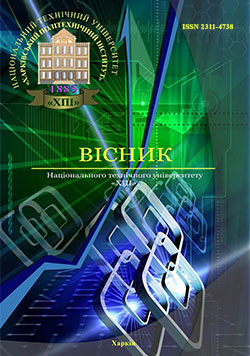A UNIFORM PROCEDURE OF A SYSTEM RESOURCES INTERACTION IN DISTRIBUTED COMPUTER MEDIA
DOI:
https://doi.org/10.20998/2413-3000.2017.1225.17Keywords:
distributed computing systems, scheduling, task allocation, resource allocationAbstract
Nowadays railways present the processes of the existing information systems and their integration into a uniform automated control system of railway freight transportation. These processes must be based on the uniform architecture, system construction which takes into account current and future information technologies such as grid technologies and cloud calculation technologies. One of the main problems of introducing these technologies is the increased time while planning resources distribution when fulfilling tasks, that appear in distributed control system. It is important to develop uniform approaches to the solution of this problem. A uniform procedure of all the resources interaction that allows organizing planning tasks in distributed computer systems in the given article. The procedure of resources distribution on the base on the principle of task distribution and cluster sampling method has been also described.
References
Minukhin S. V. Models and methods for solving planning problems in distributed computing systems. Kharkiv, Shedraya usadba plus, 2014. 323 p.
Ponomarenko V. S., Listrovoy S. V., Minukhin S. V., Znahur S. V. Methods and models of resource planning in GRID-systems. Kharkiv, KhNUE, 2008. 407 p.
Listrovoy S. V., Minukhin S. V. Approach and model of resource allocation planning in Grid. International Scientific and Technical Journal "Problems of Management and Informatics". 2012, no. 5, pp. 65–82.
Papadimitriu H., Staygits K. Combinatorial optimization. Algorithms and complexity. Moskow, Mir, 1985. 509 p.
Kesselman C. Foster, Tuecke S. The Anatomy of the Grid: Enabling Scalable Virtual Organizations. International J. Supercomputer Applications. 2001, vol. 15 (3),. Available at: http://www.globus.org/alliance/publications/papers/anatomy.pdf.
Listrovoy S.V., GUL А. Yu. «Method of Minimum Covering Problem Solution on the Basis of Rank Approach»// Engineering Simulation. 1999. vol.17. pp. 73–89.
Listrovoy S. V., Minukhin S. V. General approach to solving optimization problems in distributed computing systems and the theory of building intelligent systems. International Scientific and Technical Journal "Problems of Management and Informatics". 2010, no. 2, pp. 65–82.
Listrovoy S. V., Minukhin S. V. General Approach to Solving Optimization Problems in Distributed Computing Systems and Theory of Intelligence Systems Construction. Journal of automation and information sciences. 2010, vol. 42, no. 3, pp. 30–46
Listrovoy S. V., Golubnichiy D. Yu., Listrovaya E. S. Solution method on the basis of rank approach for integer linear problems with boolean variables. Engineering Simulation. 1999, vol.16, pp. 707–725.
Listrovoy S. V., Tretjak V. F., Listrovaya A. S. Parallel algorithms of calculation process optimization for the boolean programming problems. Engineering Simulation. 1999, vol.16, pp. 569–579.
Downloads
Published
Issue
Section
License
Copyright (c) 2017 Serhiy V. LISTROVOY, Karyna A. TRUBCHANINOVA, Volodymyr O. BRYKSIN, Maksym S. KURTSEV

This work is licensed under a Creative Commons Attribution-NonCommercial-ShareAlike 4.0 International License.
Our journal abides by the Creative Commons copyright rights and permissions for open access journals.
Authors who publish with this journal agree to the following terms:
Authors hold the copyright without restrictions and grant the journal right of first publication with the work simultaneously licensed under a Creative Commons Attribution-NonCommercial-ShareAlike 4.0 International License (CC BY-NC-SA 4.0) that allows others to share the work with an acknowledgement of the work's authorship and initial publication in this journal.
Authors are able to enter into separate, additional contractual arrangements for the non-commercial and non-exclusive distribution of the journal's published version of the work (e.g., post it to an institutional repository or publish it in a book), with an acknowledgement of its initial publication in this journal.
Authors are permitted and encouraged to post their published work online (e.g., in institutional repositories or on their website) as it can lead to productive exchanges, as well as earlier and greater citation of published work.

